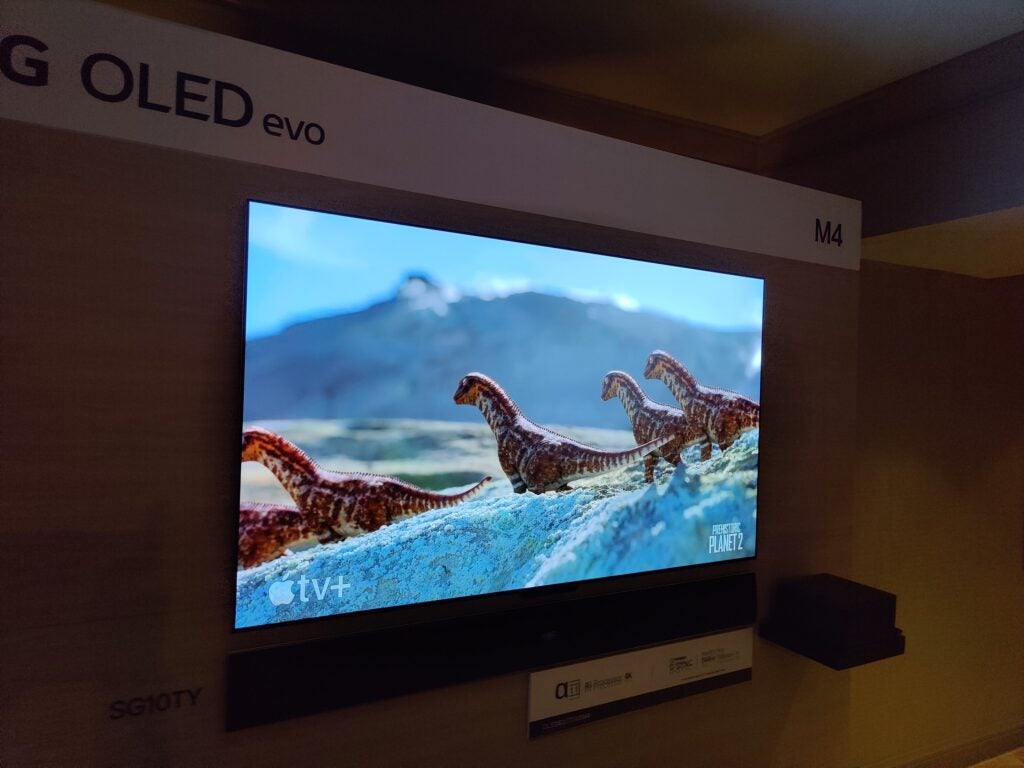Sound and Vision: AI will drive TV picture quality but that’s not always a good thing

OPINION: It’s been a busy week at CES, with more announcements than I was expecting leading up to the tech showcase. A few weeks ago, I was thinking perhaps CES might be on the wane, but while CES 2024 isn’t quite back to peak levels of attendees, it is getting back to having the same wow factor.
The one trend that most have picked up on is the use of artificial intelligence. Where this column is most concerned is with the use of AI in TVs to drive performance. It’s become more prevalent, and I’m not sure that’s always a good thing.
There are ways in which I think AI is necessary. Consider Samsung’s approach with its upcoming 8K TVs. The company has doubled down on using artificial intelligence with its NQ8 AI Gen 3 processor, applying it to motion processing and upscaling of content.
This includes being able to use AI to figure out the geometry of peoples’ faces on screen, or any object in the frame, and clear it up, sharpen it, and reduce noise to get lower quality resolutions closer to 8K. In this sense, it’s a tool to extract better picture quality.
LG would say the same thing about its latest AI mode but so far, I’m less convinced by it, especially when it appears less sacrosanct in respecting the creative intent.

Take LG’s latest α (Alpha) 11 AI processor. It’s able to work above the DRM on Netflix, Disney+, or any other streaming service you care to think of. I haven’t seen it in action, and this is only possible with the AI Picture Pro mode switched on (so you have a say in this matter) but it leaves me a little confused about what the intent is.
For example, the AI Director Processing on LG’s TVs with the α (Alpha) 11 AI processor can “analyse the director’s intentional colour tone and enhance the colour expression”.
That sentence uses the words ‘intentional’ and ‘enhance’ but they seem in opposition.
LG says this feature understands the colour science of filmmaking and adjusts it for greater impact but is that saying the purple jacket the Joker wears in The Dark Knight isn’t quite as purple as one would like, so it needs to be made more purple? Or maybe the intense contrast of colours in a Michael Bay film could be even more intense? And would this enhancement suggest that the normal picture modes are less interesting or flavourful by comparison?
At least you can turn it off, and there is Filmmaker mode for picture accuracy, but it’s an addition that feels like integrating AI for the sake of it. A reason to jazz up the picture that’s eye-catching to an end user who wants prettier pictures, but not the use of AI in keeping with the creative intent. If a shade of orange is meant to be that way, why enhance it?
It seems to take away from the philosophy of good ol’ picture tuning. Sony’s TVs are all about respecting the creator’s intent, to the point where Standard mode for its latest TVs is closer to replicating what a film or TV programme would look like on a mastering monitor. Similarly, Panasonic’s OLED TVs have been colour tuned in collaboration with Stefan Sonnenfeld, the eminent colourist for Hollywood films, having worked on Top Gun: Maverick, Gran Turismo, Tokyo Vice, Nightmare Alley and many other film and TV productions over the years.
These approaches lend credibility to respecting the creator’s intent rather than trying to add tweaks where none are needed. I think there’s a feeling from TV brands like LG and Philips that while they’ll respect the creator’s intent with dedicated Filmmaker modes, they’d also prefer more razzmatazz in other picture modes because it differentiates them from other TV brands. It’s true to say that if everyone did the same thing, picture quality wouldn’t be that interesting, but AI enhancement of the creative intent seems an unnecessary tactic to me.
Panasonic is not against the use of AI in its processor, but the way it is utilised is relatively low-key – a case of using it to recognise what you’re watching and switching the settings to fit. Roku’s US TVs will feature a similar setting. That’s ultimately not driving the picture quality you end up seeing on screen but switching TV modes so you don’t have to.
For me, these are the type of solutions I’d like to see with artificial intelligence – reducing the hassle and automating processes that take away from enjoying your new TV. If not integrated efficiently, AI could end up taking centre stage when really it’s meant to be a supporting actor.








